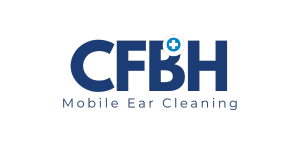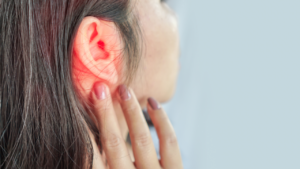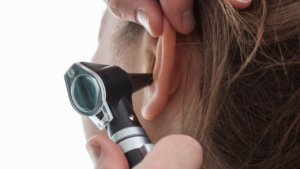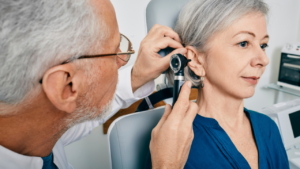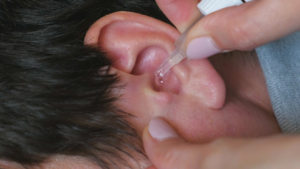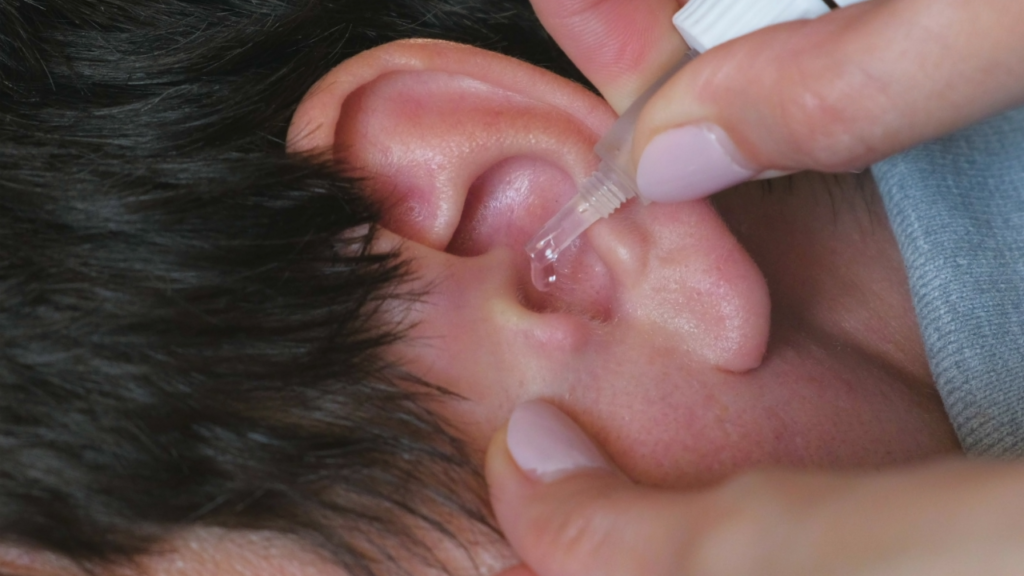
Have you ever wondered about the benefits of olive oil beyond the kitchen? Olive oil is not only a staple in cooking but also has various uses in skincare, haircare, and even ear wax removal. In this article, we will explore the different ways olive oil can be used to remove ear wax, how long it takes for olive oil to clear ear wax depending on the severity of buildup, and alternative methods of ear wax removal. Stay tuned to learn more about the wonders of olive oil in ear care.
Key Takeaways:
- Olive oil is a versatile oil commonly used for cooking, skin care, hair care, and even ear wax removal.
- Olive oil is a safe and natural alternative to chemical-filled ear wax removal methods.
- The time it takes for olive oil to clear ear wax varies depending on the severity of the buildup, but it can take anywhere from a few days to a few weeks.
What Is Olive Oil?
Olive oil is a natural oil extracted from olives, renowned for its numerous health benefits and culinary versatility.
Olive oil has been used since ancient times, with its origins dating back to the Mediterranean region. The production process involves crushing olives to extract the oil, which is then separated from water and other impurities. There are different types of olive oil, such as extra-virgin, virgin, and refined olive oil, each with its own unique characteristics and flavour profiles.
In cooking, olive oil is often used for sautéing, frying, and as a salad dressing. Besides culinary purposes, olive oil is also used in skincare products and traditional medicine due to its moisturising and antioxidant properties.
What Are The Uses Of Olive Oil?
Olive oil serves multiple purposes beyond culinary applications, including skincare, haircare, and even earwax removal.
In terms of skincare, olive oil is a versatile and natural ingredient that is rich in antioxidants, healthy fats, and vitamins E and K, making it a great addition to facial cleansers, moisturisers, and even DIY face masks.
Similarly, in haircare, olive oil can be used as a deep conditioning treatment to nourish and hydrate the hair, promoting shine and strength. It can also be applied to the scalp to help combat dandruff and promote overall scalp health.
Olive oil has been utilised in alternative health practices such as oil pulling, a technique that involves swishing oil around in the mouth to improve oral health and hygiene.
Cooking
Using olive oil in cooking enhances the flavour profile of dishes, provides healthy fats, and is a staple in Mediterranean cuisine.
Olive oil is known for its versatility, whether it’s used for sautéing, grilling, dressing salads, or drizzling over freshly baked bread. Different varieties of olive oil, such as extra-virgin and virgin, offer unique flavour profiles that can elevate a dish to a whole new level.
The health benefits of olive oil are well-documented. It is rich in monounsaturated fats, which are beneficial for heart health, and contains antioxidant properties that help combat inflammation and oxidative stress in the body.
Skin Care
Olive oil is a popular natural remedy for skincare, known for its moisturising properties, antioxidant content, and potential benefits for skin health.
In terms of skincare, olive oil acts as a versatile ingredient that can deeply hydrate the skin, leaving it soft and supple. Its rich composition of vitamins E and K helps in maintaining skin elasticity and combating free radical damage.
The anti-inflammatory properties of olive oil make it ideal for soothing irritated skin and reducing redness. Whether used as a gentle make-up remover, a nourishing moisturiser, or incorporated into DIY face masks, its versatility in skincare routines is truly remarkable.
Hair Care
When used in hair care, olive oil can help nourish and condition the hair, improve scalp health, and provide a natural shine to the strands.
One of the key benefits of olive oil for hair health is its rich content of antioxidants and vitamins, such as vitamin E and A, which can promote overall hair growth and strength. The emollient properties of olive oil make it an excellent natural moisturizer, helping to combat dryness and frizz.
Regular application of olive oil can also aid in reducing scalp inflammation and dandruff, thanks to its anti-inflammatory properties. The fatty acids present in olive oil contribute to sealing moisture into the hair shaft, preventing damage and breakage.
Ear Wax Removal
Olive oil is a popular natural remedy for earwax removal, offering a gentle and effective solution to soften earwax buildup and facilitate its removal.
When using olive oil for earwax removal, it works by loosening the hardened wax, making it easier to come out on its own or with gentle irrigation. This method is particularly advantageous for individuals with sensitive ear canals, as it is less likely to cause irritation compared to other methods such as ear candling or ear syringing.
Ensuring safety during the process is crucial, so it is advisable to warm the olive oil slightly before application to avoid discomfort. Never forcefully insert any objects into the ear canal to remove softened wax, as this can lead to injury or further impaction.
How Does Olive Oil Help In Removing Ear Wax?
Olive oil aids in removing earwax by softening the hardened wax, making it easier to clear out of the ear canal.
When olive oil comes into contact with the earwax, it helps to break down the hardened structure of the wax, allowing it to become more pliable and easier to dislodge. This softening effect is crucial in facilitating the natural migration of earwax out of the ear canal. The lubricating properties of olive oil reduce friction, making the removal process less abrasive and more comfortable for the individual.
Regular application of olive oil can also prevent the build-up of excessive earwax, promoting healthy ear hygiene and preventing potential blockages or discomfort.
How Long Does It Take For Olive Oil To Clear Ear Wax?
The time it takes for olive oil to clear earwax varies based on the severity of the earwax build-up, ranging from a few days to a week for noticeable effects.
For mild earwax build-up, where the blockage is minimal, olive oil may start showing its benefits within a few days of regular application. The oil works by softening the wax, making it easier for the ear to naturally expel excess build-up.
In cases of moderate earwax accumulation, it might take closer to a week of consistent use before improvements are observed. The effectiveness of olive oil largely depends on the individual’s ear anatomy and the extent of the blockage.
For severe cases of earwax build-up, where the wax is deeply impacted, olive oil alone may not suffice. It is advisable to consult a healthcare professional for removal procedures, as excessive build-up can lead to hearing problems and discomfort.
Mild Ear Wax Buildup
For mild earwax build-up, olive oil typically takes a few days to soften the wax sufficiently for natural expulsion or manual removal.
Common symptoms of mild earwax build-up include earache, partial hearing loss, ringing in the ears, and feeling of fullness in the ear.
To prevent excessive wax accumulation, avoid using cotton buds or inserting foreign objects into the ear canal, as this can push the wax deeper.
After using olive oil, gently rinse the ear with warm water or a saline solution to help remove the softened wax.
If symptoms persist or worsen, consult a healthcare professional for further evaluation and treatment.
Moderate Ear Wax Buildup
In cases of moderate earwax build-up, olive oil may take a week or more to soften the wax adequately for removal, requiring patience and consistent application.
It’s important to note that the efficacy of olive oil in earwax removal can vary from person to person, depending on individual factors such as the consistency and depth of the wax. For some, a longer duration of treatment may be necessary to achieve desired results.
Plus using olive oil, individuals can consider using over-the-counter ear drops designed specifically for earwax softening. Professional medical guidance should be sought if the build-up persists or if there are any accompanying symptoms like pain, hearing loss, or dizziness.
While waiting for the olive oil to work its magic, avoid inserting any objects into the ear canal, as this can further impact the situation or lead to injury. Patience and adherence to the prescribed treatment plan are key to effectively managing earwax build-up.
Severe Ear Wax Buildup
Severe earwax build-up may necessitate professional intervention even after olive oil application, as the wax may be deeply impacted and challenging to remove.
While olive oil can aid in softening the earwax, it might not effectively dislodge it if the blockage is severe. Medical professionals have specialised tools and techniques to safely remove stubborn earwax, preventing further complications such as hearing loss or ear infections. Seeking medical assistance ensures a thorough evaluation and appropriate intervention for optimal ear health.
In cases where olive oil alone is insufficient, individuals should avoid using non-medical devices, such as cotton buds or hairpins, as these can push the wax deeper into the ear canal, worsening the condition.
What Are The Other Methods Of Ear Wax Removal?
Apart from olive oil, other methods of earwax removal include bicarbonate ear drops, ear irrigation, ear candling, and manual removal by a professional.
Ear irrigation involves using a gentle flow of lukewarm water to flush out wax build-up under the guidance of a healthcare professional. This method can effectively break down and wash away excess earwax, relieving blockages and discomfort.
On the other hand, ear candling, a controversial technique, involves inserting a hollow candle into the ear canal and lighting it to create a vacuum effect. This method lacks scientific evidence and carries potential risks like burns, ear canal damage, and wax blockage.
Manual removal by a doctor is a safe and precise procedure where a medical professional uses specialised tools to extract stubborn earwax safely and efficiently. It is recommended for severe cases or when other methods have not been successful.
Ear Irrigation
Ear irrigation involves flushing the ear canal with a gentle stream of water to dislodge and remove earwax buildup.
During ear irrigation, a healthcare provider may use a specialised kit that typically includes a bulb syringe or a device that delivers a controlled flow of warm water into the ear canal. This process helps soften the earwax, making it easier to flush out. The benefits of ear irrigation include improved hearing, relief from ear pain or pressure, and prevention of potential complications such as infections.
There are some potential risks associated with ear irrigation, such as injury to the eardrum, irritation of the ear canal, or incomplete removal of earwax. If you experience severe pain, bleeding, dizziness, or hearing loss during or after ear irrigation, it is essential to seek professional assistance immediately to prevent further damage to your ear.
Ear Candling
Ear candling is a controversial method that involves inserting a hollow candle into the ear and lighting it to create a vacuum effect for earwax removal.
Proponents of ear candling claim that it can alleviate various ear issues, such as earwax build-up, earaches, and even sinus infections. However, medical professionals and regulatory bodies caution against the practice due to safety concerns. The American Academy of Otolaryngology states that not only is ear candling ineffective for wax removal, but it can also lead to serious injuries, such as burns, perforated eardrums, and even blocked ear canals. Moreover, research studies have failed to find any scientific evidence supporting the purported benefits of ear candling.
Manual Removal By A Doctor
Manual removal of earwax by a doctor involves using specialised instruments to safely extract impacted wax from the ear canal.
During this procedure, the doctor carefully examines the ear using an otoscope to assess the extent of wax build-up. Once the area is visualised, the doctor may use tools such as curettes or suction devices to gently remove the wax. It is crucial for the doctor to have the necessary training and expertise to avoid causing damage to the delicate structures of the ear.
Safety precautions, such as ensuring proper lighting and positioning of the patient, are essential to prevent accidental injury during the process. Complications from earwax removal, although rare, can include perforation of the eardrum or irritation of the ear canal lining.
When should you consult a professional for ear wax removal?
It is advisable to consult a professional for earwax removal if you experience persistent symptoms such as hearing loss, pain, or recurrent ear infections.
Ignoring these warning signs can lead to complications like impacted earwax, which may result in dizziness, ringing in the ears, or even complete hearing loss. Attempting self-treatment with cotton buds or ear candling can push the wax deeper into the ear canal, causing further blockages and potential damage.
Timely intervention by a healthcare professional is crucial to safely and effectively remove excess earwax and address any underlying issues that may be contributing to the buildup. In some cases, specialised tools or techniques may be required for thorough removal to prevent damage to the delicate structures of the ear.
